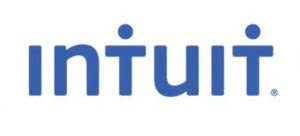First In, First Out FIFO Method Problem & Solution

For the 200 loaves sold on Wednesday, the same bakery would assign $1.25 per loaf to COGS, while the remaining $1 loaves would be used to calculate the value of inventory at the end of the period. A negative trait of the FIFO method of costing is that it does not follow a natural flow. Therefore, when materials are returned from the factory to the storeroom they will be valued at costs that were not their original purchase prices. This can lead to overvaluation in closing inventory and material used in production. First in, first out (FIFO) is an inventory costing method that assumes the costs of the first goods purchased are the costs of the first goods sold.
Other Inventory Valuation Methods
As each sale occurs, the cost of goods sold is calculated by removing the oldest item’s costs from the inventory asset account. This increases expenses on the income statement and reduces the inventory balance on the balance sheet. FIFO impacts key financial statements and metrics like net income, inventory valuation, and cost of goods sold. By understanding how the FIFO method works, businesses can more accurately track inventory costs over time. FIFO, or First In, First Out, is an inventory valuation method that assumes that inventory bought first is disposed of first. Companies using perpetual inventory system prepare an inventory card to continuously track the quantity and dollar amount of inventory purchased, sold and in stock.
Would you prefer to work with a financial professional remotely or in-person?

Because more expensive inventory items are usually sold under LIFO, the more expensive inventory items are kept as inventory on the balance sheet under FIFO. Not only is net income often higher under FIFO, but inventory is often larger as well. The FIFO (First In, First Out) method is a common inventory accounting technique for assigning costs to goods sold and goods still available for sale. However, there are other methods that can be used as well, such as LIFO (Last In, First Out) and weighted average.
FIFO method: Pros vs. Cons

The $1.25 loaves would be allocated to ending inventory (on the balance sheet). FIFO and LIFO also have different impacts on inventory value and fifo accounting formula financial statements. Under FIFO, older (and therefore usually cheaper) goods are sold first, leading to a lower average cost of goods sold.
Using the FIFO method makes it more difficult to manipulate financial statements, which is why it’s required under the International Financial Reporting Standards. Depending upon your jurisdiction, your business may be required to use FIFO for inventory valuation. For example, consider the same example above with two snowmobiles at a unit cost of $50,000 and a new purchase for a snowmobile for $75,000. The sale of one snowmobile would result in the expense of $50,000 (FIFO method). Therefore, it results in poor matching on the income statement as the revenue generated from the sale is matched with an older, outdated cost. Assume a company purchased 100 items for $10 each, then purchased 100 more items for $15 each.
Warehouse management refers to handling inventory and similar tasks within a warehouse environment. Shopping for small business accounting software can be painful and confusing. Using FIFO, the COGS would be $1,100 ($5 per unit for the original 100 units, plus 50 additional units bought for $12) and ending inventory value would be $240 (20 units x $24). Ecommerce merchants can now leverage ShipBob’s WMS (the same one that powers ShipBob’s global fulfillment network) to streamline in-house inventory management and fulfillment. Through the software, we get real-time insight into how much inventory to allocate to a specific warehouse, our current on-hand inventory levels, and how long each SKU is going to last by location.

Specific inventory tracing
- The FIFO method assumes that the oldest items in inventory are sold first, meaning the cost of goods sold is based on the oldest inventory items.
- This means that if you purchased a batch of 300 goods and only sold 150, you would multiply the purchase price by 150.
- The average inventory method usually lands between the LIFO and FIFO method.
- Under LIFO, September products are sold first even if July products are left over, leaving the remaining at a low value.
